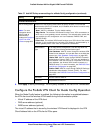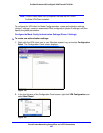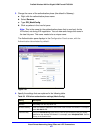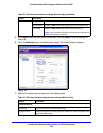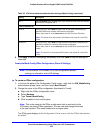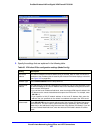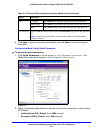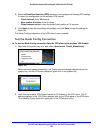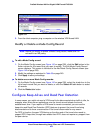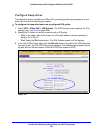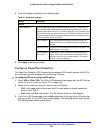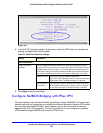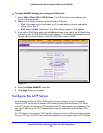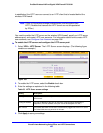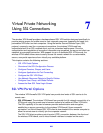
Virtual Private Networking Using IPSec and L2TP Connections
253
ProSafe Wireless-N 8-Port Gigabit VPN Firewall FVS318N
Figure 154.
3. From the client computer, ping a computer on the wireless VPN firewall LAN.
Modify or Delete a Mode Config Record
Note: Before you modify or delete a Mode Config record, make sure it is
not used in an IKE policy.
To edit a Mode Config record:
1. On the
Mode Config screen (see Figure 143 on page 238), click the Edit button in the
Action column for the record that you want to modify. The Edit Mode Config Record
scre
en displays. This screen is identical to the Add Mode Config Record screen (see
Figure 144 on p
age 239).
2. Mo
dify the settings as explained in Table 56 on page 240.
3. Click App
ly to save your settings.
To delete one or more Mode Config records:
1. On the
Mode Config screen (see Figure 143 on page 238), select the check box to the
left of each record that you want to delete, or click the Select All t
able button to select
all records.
2. Click the Del
ete table button.
Configure Keep-Alives and Dead Peer Detection
In some cases, you might not want a VPN tunnel to be disconnected when traffic is idle, for
example, when client-server applications over the tunnel cannot tolerate the tunnel
establishment time. If you require a VPN tunnel to remain connected, you can use the
keep-alive and Dead Peer Detection (DPD) features to prevent the tunnel from being
disconnected and to force a reconnection if the tunnel disconnects for any reason.
For DPD to function, the peer VPN device on the other end of the tunnel also needs to
suppo
rt DPD. Keep-alive, though less reliable than DPD, does not require any support from
the peer device.



